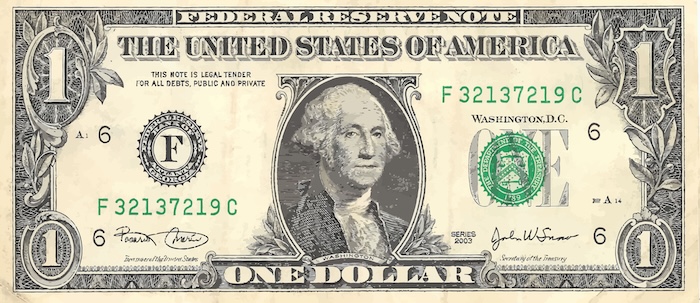Short term USD strengthening
Besides gold and other precious metals, another asset that holds the ‘’safe heaven’’ title among the investors is the U.S. dollar. It is the currency used in majority of global trades and transactions which makes it the most stable and reliable. Tensions in the Middle East have escalated into a wider conflict in recent weeks, prompting many investors to move their funds into safe-haven assets resulting in a sudden surge in the value of USD. The U.S. Dollar Index, which measures the greenback against six major currencies, rose 0.1% to 100.969 on Wednesday, October 2, adding to its 0.5% gain the previous day. It continued to grow throughout the following week, reaching 102 basis points by October 9. However, other forces are also at play.
As US economic indicators over the last couple of months continued to reinforce bets on a September rate cut, the situation finally entered the action phase on September 19, 2024. In the months leading up to that point, the USD gradually weakened against other major currencies, including the EUR, JPY, and CNY. It is expected that the Fed will continue making gradual cuts, and with that prospect, further weakening of the USD might follow — provided that inflation and other macroeconomic factors remain on track.
Performance of U.S. Dollar Index over 5 years. Source: tradingview.com
Chinese yuan set to dominate Asian markets
China has been pushing for the yuan to become an alternative to, or rival USD dollar on the global stage. However, this effort still seems far-fetched, considering that as of last year, the U.S. dollar accounted for a 66% share of global international currency usage, while the yuan held only 2.5%. That said, since the Western sanctions against Russia due to its invasion of Ukraine, the role of CNY in international trade with Russia has become more significant. It has served as a means for countries to offset the impact of potential further sanctions by avoiding financial networks dominated by the U.S. Additionally, when we compare the international usage of the yuan to China’s share of global GDP, it becomes clear that the currency still has substantial room for growth.
China also supports the international use of CNY through various mechanisms, such as establishing 31 offshore CNY clearing banks and launching the Cross-Border Interbank Payment System (CIPS). From 2010 to 2023, the use of CNY for China’s cross-border payments has surged, surpassing the USD for the first time in March 2023. This shift is driven by increased foreign willingness to trade in CNY and bilateral trade agreements, like those with Brazil and Argentina, allowing for CNY-denominated settlements.
What are the prospects of Japanese yen?
Another Asian currency, the Japanese yen, had been losing ground against the US dollar for years, as the Japanese economy struggled with mounting debt. However, the tide may have turned earlier this year when the Bank of Japan put an end to its financial stimulus through negative interest rates and introduced two rate hikes, currently holding borrowing costs at around 0.25%. This prompted the yen to gain some strength in recent months. However, the BOJ's aggressive purchase of government bonds (quantitative easing) was meant to inject money into the economy, keep borrowing costs low, and stabilize the yen's value. Unfortunately, that has led to a shortage of bonds in the market, making trading difficult and pushing yields down, keeping the yen weak. Until recently, JPY was gaining some ground over USD, but Japan's newly elected prime minister expressed reluctance to pursue further monetary tightening, which makes JPY’s further strengthening less likely in the foreseeable future.
Conclusion
While the U.S. dollar has recently strengthened amid geopolitical tensions, its long-term prospects are uncertain due to potential interest rate cuts by the Federal Reserve and signs of economic decline. Meanwhile, China's push for the yuan's internationalization is gaining momentum, aided by trade agreements and a robust clearing network. The Japanese yen, bolstered by recent monetary policy changes, is also showing signs of recovery, however it is unlikely to compete with Chinese counterpart. Overall, the evolving dynamics in currency markets suggest a potential shift away from dollar dominance, with CNY emerging as significant alternative in the Asian markets.
Sources:
https://www.xe.com/blog/currency-news/global-currency-outlook-september-2024/
https://www.deccanherald.com/opinion/the-geopolitics-of-de-dollarisation-3206898
https://www.reuters.com/breakingviews/chinas-march-strong-yuan-is-long-perilous-2024-09-25/


